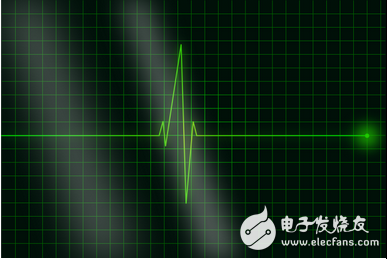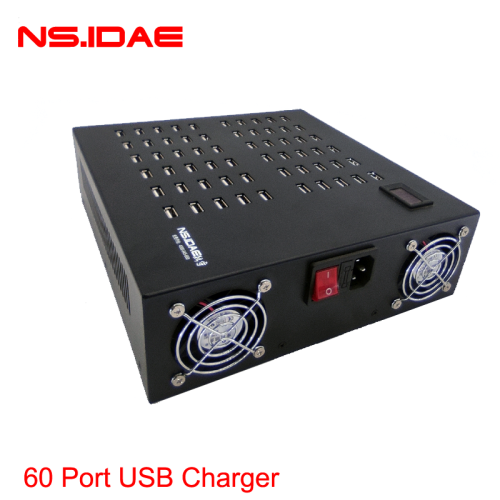With the popularization of mobile devices and the Internet of Things, the amount of data transmission continues to grow in a proportional order every year, and we therefore need a higher transmission rate. To meet these needs, the key lies in the maturity of 5G technology. Since the existing spectrum resources are quite tight, it is imperative to perform channel detection in higher frequency bands and find frequencies suitable for 5G mobile transmission. At this time, spectrum analysis instruments often play an important role. At present, the communication methods commonly used in daily life mostly rely on radio wave transmission signal technology, including Bluetooth, wireless network, mobile communication, satellite communication and broadcasting, etc. In order to establish a global high-speed wireless network environment, for example, SpaceX, a space company established by Elon Musk, plans to launch 4,425 communication satellites in the future, providing a high-speed transmission rate of about 1Gbit/sec. The development of mobile communication technology from 4G to 5G is expected to increase to 10Gbit/sec. To increase the transmission rate, there are two main methods, one is to increase the spectrum efficiency, and the other is to increase the bandwidth. Since the same frequency can only be used once, increasing the spectrum efficiency is like squeezing more 0 and 1 bits into an electromagnetic wave with a fixed bandwidth, but the signal will be more susceptible to interference or decoding errors; and wireless networks, Internet of Things , Mobile communications and AM, FM and other radio electromagnetic wave frequencies are squeezed below 6GHz, it is difficult to increase the bandwidth and there is no room. Therefore, to find new spectrum resources for use in 5G communications, the only way to go all the way to higher frequency millimeter waves (Millimeter Wave). Generally, satellite communications, satellite positioning, radar and microwave communications generally use electromagnetic waves with a frequency of 1-100GHz, and electromagnetic waves with a frequency of 30-300GHz (equivalent to a wavelength of 1-10mm) are called "millimeter waves." Therefore, all of the above communication methods Utilize the frequency band of millimeter wave. The maximum signal bandwidth of wireless communication is about 5% of the carrier frequency, which means that the higher the carrier frequency, the larger the achievable signal bandwidth. For example, the carrier with the highest frequency in the 4G-LTE frequency band is around 2GHz, and the usable bandwidth is only 100MHz. Therefore, if 5G uses the millimeter wave frequency band in the future, the bandwidth can easily be increased by 10 times, and the transmission rate will be greatly increased. A few days ago, Keysight also reached a cooperation with the Chip Center of the National Research Institute to use “millimeter wave front-end circuit system technology†with Keysight’s 5G baseband signal verification database software for the Taiwanese academic community to teach and teach 5G millimeter-wave RF front-end technology. Research and use, accelerate the realization of 5G technology. In addition to next-generation mobile communications, millimeter wave applications in consumer and commercial fields are also infinite potential, including wireless sensor networks, airport security scanning, etc., which can drive further research and demand growth in the millimeter wave field. Because millimeter waves can provide testing, filtering and transmission of high-frequency signals in wireless communication networks, they can also be used in military defense and aerospace, and their performance is better than traditional microwave or infrared sensing technologies. For example, millimeter-wave radars installed on airplanes or satellites can perform anti-collision warning sensing, autonomous cruise control, robot vision, air defense monitoring and other functions. Millimeter wave imaging can detect hidden objects, such as weapons, explosives, or drugs under the ground or under clothing. Millimeter wave communication has the characteristics of high transmission rate and short-distance high-frequency applications, but it also has its limitations, such as fast signal attenuation, easy obstruction, short coverage distance, etc., especially at 60GHz, it will withstand about 20dB/km of oxygen Absorption loss. Therefore, if 5G communication is to be applied in the high-frequency millimeter wave range, it must be confirmed that these frequencies can operate smoothly in a multi-path environment and can be used for non-visible distance communication. In exploring the field of unknown high-frequency signals, spectrum analysis is an indispensable step for electronic engineering and technical personnel; and the performance of the instruments they use for spectrum analysis will influence the results of the research. Modern signal analyzers have more comprehensive functions than general spectrum analyzers. In addition to the frequency domain, they can also provide analysis in the time domain and modulation domain. They have a wide range of applications: such as satellite systems, radio communication systems, and mobile phone system base station radiation fields. Strong measurement, detection and analysis of high-frequency signals such as electromagnetic interference. At the same time, it can also study the characteristics of signal composition, signal distortion, signal attenuation, and electronic component gain. Usually, the RF signal contained in each measurement cannot be expected to change over time. Technicians or scientists often face problems such as rare and short-lived events, or the signal is masked by strong noise. In order to view, capture and analyze the most erratic signals, for example, to quickly find pulse or intermittent signals in an environment filled with various signals, the "real-time spectrum" function of the signal analyzer must be used. This also means that the signal analyzer must sample the input signal fast enough to process all the signal quantities in the frequency band of interest; it can also perform all calculations continuously so that the analysis output can keep up with the changes in the input signal. 60 Port Usb Charger,Multi-port USB 600W charger,60 Port Usb Smart Charger,High Power Mobile Phone Charger shenzhen ns-idae technology co.,ltd , https://www.szbestchargers.com

60 Port USB Charging
This 60 -port USB charger is charged at the fastest speed to as many as 60 devices. The table charger has 60 ports. The maximum output of a single USB port is 2.4A, and the output power is as high as 300W. Super intelligence: Each port can charging a current of up to 2.4A, and adaptive smart chip detector can provide the best charging current for connected devices. Multiple protection: The USB charger has rush protection, over -current and overvoltage protection functions, which can safely protect your smart devices. Suitable for multiple devices: charging stations are compatible with 99 % of smart devices, such as iPad iPhone, tablet, Bluetooth headset, fan, DVS, for PSP. It is suitable for various occasions, such as hotels, school dormitories, gym and other places.